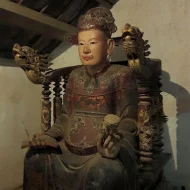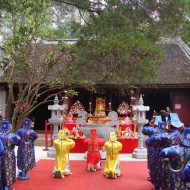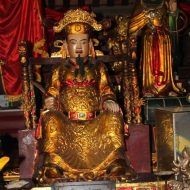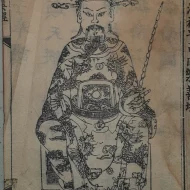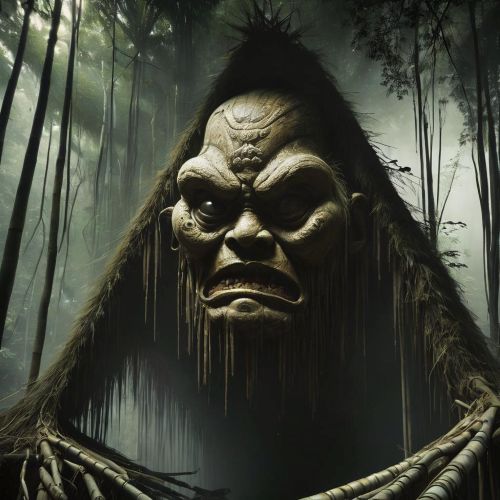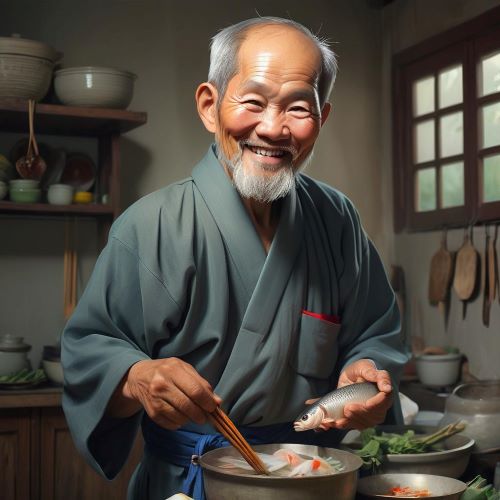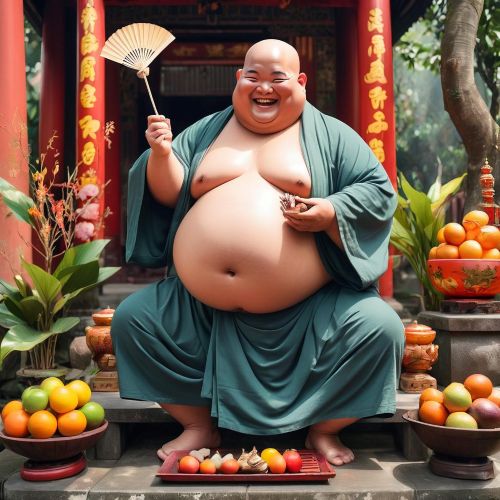Ong Troi : The God of Heaven
Listen
At a glance
| Description | |
|---|---|
| Origin | Vietnamese Mythology |
| Classification | Gods |
| Family Members | Bag Troi (Wife) |
| Region | Vietnam |
| Associated With | Heavens, Creation, Sky |
Ong Troi
Introduction
In the realm of Vietnam’s traditional folk religion, the deity known as Ong Troi, translating to “Old Man Sky,” holds profound significance. Influenced by Taoism and the ascent of the Jade Emperor, he came to be known as Ngoc Thuong, signifying “Old Man Sky,” or commonly addressed as Thuong De.
Physical Traits
Ong Troi bears a striking physical resemblance to the Jade Emperor or Ngoc Hoang. Clad in imperial attire, Ngoc Hoang dons a shirt adorned with a golden dragon, a hat with red tassels atop his head, adorned with thirteen five-colored pearls, and holds a hốt in hand. Seated on the throne, Ngoc Hoang touches the dragon on each encounter with the dynasty, overseeing matters both in heaven and on earth.
Family
In the time before the creation of all things, a deity named Troi existed, responsible for crafting everything, from the Earth and the sea to the mountains, the sun, and the rain. Possessing the ability to observe all occurrences in the world, Troi is credited with the creation of all living beings.
Overall, Ong Troi is acknowledged as the progenitor of everything, and none can evade the celestial influence. The prevailing belief holds that Ong Troi orchestrated the act of creation, and upon a person’s passing, they return to paradise. The spouse of Ong Troi is referred to as Ba Troi.
Other names
In different religious contexts, Ong Troi may go by the names Ong Thien or Ong Hong. In specific regions, particularly in South Vietnam, he is commonly addressed as a Monarchial Father. In Vietnamese Buddhism, he is often linked with Sakra.
In folklore and mythology, this deity is recognized as Ho Thien, signifying “Old Man Cloud.” Additionally, he is sometimes abbreviated to names resembling individuals, such as Hao Thien Ngoc Thuong De or Ngoc Hoang Thuong De, which are derived from the given names of the Jade Emperor. These names are also used to refer to individuals in certain instances.
Powers and Abilities
When humans incur the wrath of Ong Troi due to their errors, it results in natural disasters like floods, droughts, and storms. Ong Troi is recognized as the primary deity of heaven responsible for creating mankind. In the early days, the people of Ngoc Hoang shaped human forms from clay. Upon the arrival of heavy rain, they swiftly moved the statues to safety, but unfortunately, some were damaged in the process. Those statues removed and damaged transformed into individuals with disabilities, whereas the ones safeguarded remained healthy. Subsequently, the responsibility of crafting people was entrusted to Ngoc Hoang or Ong Troi.
Modern Day Influence
Ong Troi is venerated in Vietnam, with numerous shrines and temples dedicated to his worship. In Central and South Vietnam, families frequently congregate at an altar known as Bn Thi. Additionally, Ong Troi is a prominent figure in the television series “Gap nhau cuoi nam.”
Related Images
Frequently Asked Questions
Who is the Vietnamese god of the sun?
A deity related to the sun is Mat Ga Trong, which means “Sun Rooster”. She is the Vietnamese sun goddess and a daughter of Ong Troi, another name for the Jade Emperor. Her sister is the moon goddess. She carries the sun, adorned with rooster images, across the sky by her attendants as she reclines on it and gives the world light and warmth
What was Vietnam's first religion?
Vietnamese folk religion, which is a mixture of world religions and indigenous faiths, but it focuses mostly on the reverence for symbols of divinity, such as ancestors, gods, goddesses, spirits and natural forces. Vietnamese folk religion is not a unified system of beliefs and practices, but rather a diverse and syncretic phenomenon that varies by region, ethnicity and historical period and is considered to be one of the earliest religions.
Who is the Vietnamese creator God?
Ông Trời, which means “Old Man Sky/Heaven”. He is the king of the gods and one of the most important gods in traditional Vietnamese folk religion. He was later identified with the Jade Emperor due to the influence of China. He is also the father of all things and the creator of mankind. He used clay to mold the body and dried it in the sun, and then breathed life into it
Do Vietnamese worship Hindu gods?
Balamon Cham Hindus are a minority group of ethnic Cham people who practice a form of Shaivite Hinduism. They mainly live in the Ninh Thuan and Binh Thuan provinces of Vietnam. They worship Hindu gods such as Shiva, Vishnu, Brahma, Ganesha, Lakshmi and others. They also have some local deities and goddesses that are unique to their culture.

